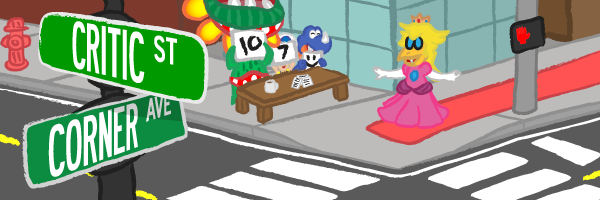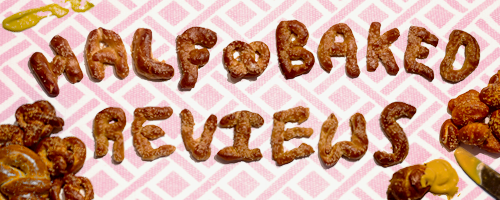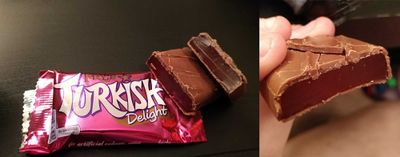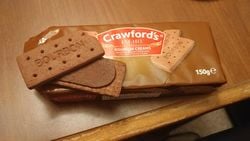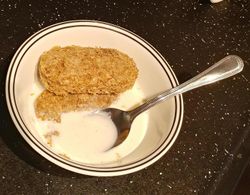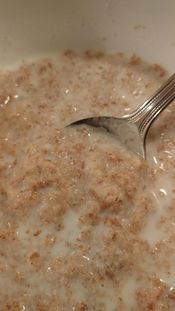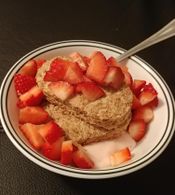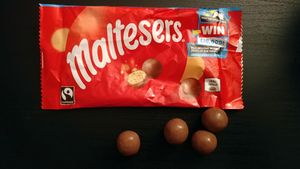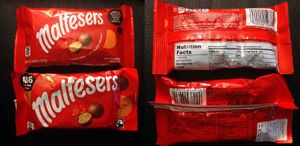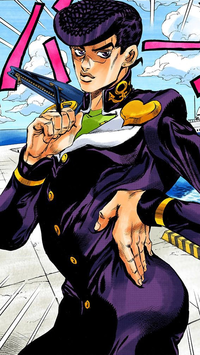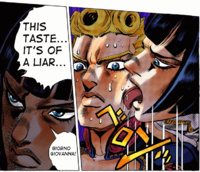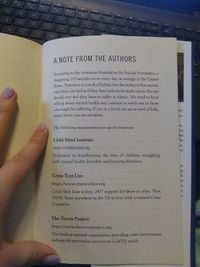Director's Notes
May may may may, what do I say about May? Well, Florida is entering its rainy season and is currently undergoing lovebug season, and the cockroaches are getting bigger, all the joys of life. Come inside and stay dry here at Critic Corner! While you're here be sure to check out Stargazing (talk)'s new section Spacing Out way at the bottom near the poll everyone should vote in!
Big thanks to everyone for making Half-Baked Reviews Critic Corner's Section of the Month again!
Mario Awards XIII Anniversary events have been happening at a brisk pace, with meetings already pretty much complete! A bunch of tournaments and games are already in the works, so if you want to keep up with those, or information on the polls, please check out the Awards board on the forum! Polls are out next month so be ready for me to be screaming from the mountaintop about them.
If you would like to help Critic Corner, we always have openings for more writers! There's no pressure to have a huge section; they can be shorter and concise! The application process is very simple, starting with reading the Sign-Up page, and sending your application to LudwigVon, our Stats Manager on the forum. On the Sign Up page, there is a list of "vacancies" that provide you with examples of the types of sections we're looking for that would fit into Critic Corner. Any idea you have is welcome!
Section of the Month
| Critic Corner SECTION OF THE MONTH | ||||
|---|---|---|---|---|
| Place | Section | Votes | % | Writer |
| 1st | Anton's Half-Baked Reviews | 8 | 36.36% | Hypnotoad (talk) |
| 2nd | Virtual Console Reviews | 6 | 27.27% | Doomhiker (talk) |
| 3rd | G. TV | 4 | 18.18% | MsRetroGeek (talk) |
| 3rd | Rising Sun Reviews | 4 | 18.18% | Hooded Pitohui (talk) |
April’s showers have turned into May’s showers, it’s time to stick around in rainy Britain for another month! This time: solids!
Fry’s Turkish Delight
Turkish Delight has a cinematic appeal to it, thanks to one C.S. Lewis. As the name suggests, this treat originates from the Ottoman Empire where it was known as rāḥat al-ḥulqūm (رَاحَة الْحُلْقُوم), meaning basically ‘throat comfort’, and was Englishified into “lokum”. They are sugar or starch gels that may or may not have fruit or nuts in them, then covered in powdered sugar or something else powdery so they don’t all stick together. In the swing of their traditional flavors, Fry’s Turkish Delight is a rose-flavored Turkish Delight, but instead of a powder coating, it’s a somewhat thin layer of milk chocolate. Well, let’s just let a British specialty food retailer give us the info directly:To start, the chocolate shell absolutely did crumble. The filling is very flexible yet firm, but the chocolate is not, so the chocolate just splinters off as it bends and makes a complete mess, like the mill scale flaking off of hot metal bending. It’s also visually unimpressive, opening the package to just a really plain-looking rectangle that cost nearly $2. The chocolate coating I could really tell was Cadbury because it had that peculiar flavor that everyone fawns over, including a cameo from that one British store that I got stuff at last month chiming in to make a snobby remark. Ok, Mr. Hanson dude sure maybe you have your preference, but if you respected your brands so much you wouldn’t stock mostly expired product in a cramped and hot setting for an extortionate rate that discourages the market from accepting your items. Maybe I’ll need to perform my own formal taste test to put my biases on trial. I’m so genial. I could provide more commentary but I wouldn’t want to deprive a prospective Chocolate Brand Death Battle section from its unique word bulk. I’m so frugal. For the actual Turkish Delight part, it had a familiar flavor, maybe licorice? Tastes really bad regardless. Product descriptions list it as sweet and sticky but it really wasn’t either at all. It was more like one of those kneaded erasers artists use for graphite and charcoal works, a taste I am admittedly acquainted with. You can’t just give a human something gummy and moldable and not expect their brains to shoot off “hnnrhrgh chewy” signals.Fry's Turkish Delight is a unique chocolate candy bar that consists of delicious Turkish delight center surrounded by creamy milk chocolate. The jelly-like Turkish Delight is firm but not chewy and doesn’t stick to your teeth. The center is smooth in consistency, while the chocolate shell doesn’t crumble apart.
The center of a Fry’s Turkish delight bar is made unique by its rose essence flavor and sugar-sweetened richness. Fry's Turkish Delight is very light and smooth so it won't be much of a concern if you are on a diet. The chocolate is rich and creamy while the center is sweet but not overpowering. Enjoy the light side of chocolate with Fry's Turkish Delight!
Product reviews seem to be polarized with the split occurring sometime between 2017 and 2018. Allegedly, the recipe has changed for the worse, likely due to production moving from the UK to Poland, and if this is the case it at least explains my unsatisfactory experience with it.
Final Word: I can’t really say that this brought my throat any comfort. I’ll be on the lookout for genuine Turkish Delight or lokum, but I can’t say that I would ever spend my money on Fry’s again.
Also, check out this old ad fetishizing the Middle East before the West decided it’s nothing but bombs and terrorists.
Crawford’s Bourbon Creams
Biscuits (cookies) are a proud British staple. Bourbon biscuits much more so because they’re the perfect shape for dunking into tea. In fact, there are dozens of brands of Bourbon biscuits, but the one I saw, grabbed, and tried was Crawford’s Bourbon Creams. As this was the brand chosen by our capitalist grocery store overlords as the token biscuit to represent the entire British Empire (right next to the McVitie’s Digestives, of course), I feel it is safe for me to make a wild assumption that these are the keynote cookies and paragon of biscuits, and nothing else rainy ol’ England has to offer will surpass it. This is the peak. Has the Invisible Hand chosen well?
Crawford’s Bourbon Creams, much like all Bourbon biscuits, are described accurately as “sandwich biscuits filled with chocolate flavour cream”. The cookie part is dark chocolate, and the name Bourbon is from the House of Bourbon, rather than the whiskey by the same name. They’re produced by a company called United Biscuits which also makes the standard set of English snacks like Mini Cheddars, Hob Nobs, McVitie’s, and Jaffa Cakes; they are then a division of pladis alongside the brands Ülker (which I intend on doing a solo brand review of in the future) and Godiva; this is then under the parent company Yıldız Holding, a Turkish conglomerate ran by the multi-billionaire Ülker family. Seems a lot of British stuff ends up actually being Turkish, huh. The history of Crawford’s as a company, though, traces its roots back to Scotland, so there’s that I guess.Regardless, they taste really boring right from the start, likely because I’m a sugar-packed spoiled American used to the stroke-inducing sweetness of inhaling an entire sleeve of Oreos. They have the appearance of dog treats more than a human snack. The more I eat, the better they taste; maybe not “better”, but like...less bad. Acceptable. This kind of dull flavor combined with how the package isn’t resealable or convenient in any way just convinces me that they haven’t changed any part of their process since 1813. The chocolate flavor is noticeable enough in that you can tell someone put cocoa powder in somewhere during the baking process so the cookie didn’t just taste like bread, but is otherwise pretty negligible.
Final Word: It’s a comfortable snack that I don’t feel like I’m about to get diabetes from just by eating a few like I’ve been responsible or something. I wouldn’t exactly put it on the level of any other typical dessert treats or sweet snacks, but I guess its blandness is designed to not overwhelm the more important flavor of tea that it is being dunked into.
Weetabix
I grabbed this for a review because eons ago someone, either GBA or Tucky, told me to try Weet-Bix. While I was at the store I sent GBA a message saying that I got Weetabix like he said I should try, and he expressed amnesia, that no he didn’t, he didn’t say Weetabix, he had no idea what it was.
I’m here today to tell you, surprise, Weet-Bix and Weetabix are the same thing. Who would've guessed?
Filling more of your screen with history and information I’m just reading off of Wikipedia pages and where those take me, Weetabix is literally just the UK version of Weet-Bix, which was originally made by the Seventh-Day Adventist church who is pretty fanatical about monopolizing hospitals and healthcare so they can push their agenda of holistic diet and health, as well as religious liberty, taking the classic shape of revoking options for people who are not of their specific faith from having access to medical care and imposing restrictions on homosexuals. Sounds like literally the exact kind of people I don’t want in control of my health and potential emergencies, nonetheless a sway in politics. Luckily Weetabix has no involvement in this aside from their producer, Weetabix Limited, having purchased the rights from the Church to create and sell pre-stale wheat bricks in England. Nearly 90 years later the cereal is easily the most popular in the UK, and now includes in its family a line of sweeter mini biscuits that are basically just Mini Wheats with fruit or chocolate, appealing to a market that my reviews below will indicate that I am part of. It came in two vertical packages much like crackers or cookies do, where once you open them up you live in constant fear that they will either grow stale overnight or ants will get into them immediately. Living in Florida, now, I have to consider the terrorism enacted by cockroaches, who have the hubris to attempt to infest food cooking on a stove top the instant it is pulled out and not even waiting. Leandra here over at Serious Eats wrote a lovely article on how to go about eating Weetabix, a useful tool for the common American who is coddled with futuristic Mini-Wheats. In that article it details what would seem to be common sense to anyone who has made the mistake of washing a spoon with its bowl angled straight up or towards oneself, that the Weetabix biscuits should be stacked in the middle of the cereal bowl, with only a little bit of milk poured straight into the bottom, as to prevent the entirety of both biscuits from being absolutely soaked. The Nokia TracFone-sized biscuits work like sponges and soak up whatever milk is there, and practicing some restraint and patience in regards to the milk allows the Weetabix to remain crunchy and desirable for longer, softening only as you go.The Original, two biscuits and cold milk
Much like eating fistfuls of Spider Eggs and Giant’s Toes in Skyrim before making a potion, it’s prudent to familiarize oneself with the base ingredients before any tinkering and customization. The density of each biscuit was suspiciously low and cardboardy, foreshadowing events to come. The biscuits immediately absorbed any and all milk I poured into the bowl, even as I did it correctly by pouring it into the bottom and not directly on top of the stacked biscuits. I could see the virtue of stacking them, as it spared the one biscuit from a soggy doom until later. It tasted strikingly like nothing, yet had this like...taste...like it tasted like mistakes, like something I shouldn’t have done, like the abstract concept of being wrong.I quickly saved the second biscuit by slapping a handful of sugar on it, rendering it palatable.
Strawberries, bananas, chocolate chips, sugar, milk
Following some PDFs and guides, I began my trek. To start, I piled on diced strawberries and bananas, sugar to taste, and then a handful of chocolate chips because why not, finished off with standard cold milk. It was actually pretty great, but it was virtually only attributable to all of the nonsense I put in there while the Weetabix only provided some crunch for maybe the first three bites before it turned into slop. This particular combo gave me thick and heavy strawberry shortcake vibes where I’m panicking about the rapidly dissolving cake but doing nothing about it while I instead eat all of the strawberries first.
Hot milk and honey
Warmed up some milk in the microwave because I wasn’t really feeling like dirtying dishes to use the stovetop. Squirted some honey on, and dumped the hot milk in, and it turned into slop pretty much instantly. The honey was sweet enough to not require the addition of sugar but was ultimately pretty boring.
Strawberry yogurt and diced strawberries
This didn’t need any sugar at all because everything I plopped on was already full of it and slathered over every inch. I had to put just a little bit of milk in there so the Weetabix nugget whatever would break apart at all without splintering like a grenade, as the yogurt just simply wasn’t absorbing fast enough for me to trust that it all would stay nice and cold.
Chocolate milk
Literally the same thing as the basic, but with chocolate milk instead of 2%. The chocolate in the milk definitely sweetened it up enough to make ingesting it not torture, but was kinda boring. Just eat Cocoa Puffs.
Mango, plain yogurt, chocolate chips
Well, I diced up the mango myself because using frozen fruit is whack, resulting in this particular selection being a lot more work than it was really worth. It tasted pretty good and all that, but after hammering away at the Weetabix biscuit to make bite-sized spoonfuls, it became apparent that it absolutely would’ve just been better in a parfait format with granola just sprinkled on and mixed in.
Dry with “low-fat spread” and jam
I’ve been completely unable to figure out what “low fat spread” even is, since it’s apparently not even margarine, so I just assumed it was that, butter, or some clone. For the “jams” I chose Smucker's red raspberry jelly, Bonne Maman peach marmalade, and Nutella. Okay, Nutella isn’t a jam, but I can slap it on stuff and spread it with a knife. The jams all slid off thanks to the butter spread, making it really difficult to eat. The Nutella was fine on there, though, probably because it’s not as goopy. After I managed to get each one in my mouth long enough to taste it, I determined that the flavor critique is all basically a product of what I put on it and nothing to do with the actual Weetabix nugget. I could’ve easily had toast or crackers and had a similar enough crunchy experience without the Weetabix thing basically chipping away in my hand sending crumbs and dust all over the place. Would actually be pretty good if not for it crumbling all over, so smaller pieces would be superior, or like a premade granola bar thing with a fruit filling.
Cinnamon dusting with raisins
All you need to know is it made me choke, and was basically a waste of milk.
Final Word: I can’t say that this will catch on any better here in the US, given that we already have a plethora of oatmeal options and culture to go with it, not to mention the behemoth that is the granola bar industry. We have an incredible overabundance of selections, and there’s no way that this economy will grab onto an item that is really only good through experimentation and learned customization when you can spend half the price to get a box of 8 pre-packaged cereal and fruit bars. Even the draw of maintaining crunchiness is only a factor of overcoming one’s hubris in regards to reckless milk pouring. That being said, the seemingly wider variety of things I can do to a solid brick of processed wheat grain compared to a loose bowl of milled corn flakes and puffed rice is enough for me to have some ambiguous urge to have a couple around to shake up breakfast and snack time. If they sold them in a box of like 8 pre-packaged biscuits, then I’d have more flexibility, and maybe it would catch on here, too.
Maltesers
Never having heard of these despite having some sense of familiarity with them, I saw them on the International shelf in Publix, saw that they were tl;dr Whoppers, saw that they were a decent price, and bought them. If you know what a Whopper is, you know what a Malteser is. I guess vice versa if you’re not American. They’re malted milk balls covered in chocolate. The bag itself says milk chocolate with a honeycombed center; not sure how that’s different from malted milk balls, but the front of the package had a noticeable lack of identification of what was inside, so the assumption is that they are the same. It DID say it was Fair Trade and vegetarian if you care about those.Readily noticeable, they are much better than Whoppers. Not only do they have a better flavor and a noticeably thicker covering of chocolate, but the inside also doesn’t feel as caustic. They’re definitely not as sweet, but what they lack in American sugar industry subsidy sweetness, they have in superior texture and feel. My experience with Whoppers includes a 1 in 5 chance of a piece having some kind of defect where it’s just really hard and unpleasant, whereas in this 37g pack of probably 30 pieces they were all consistent and pleasing. My teeth can glide right through each Malteser without any of that gross crunching sound that is causing my body to cringe as I type this out due to imagining it, and the whole orb is a silky experience while still having a satisfying crunch. They’re also visibly and tactilely airier than the dense, chalky Whoppers.
They seem to be sold all over the place in America now, so go try them! They have a different producer in New Jersey. Different package for the American market and it seems different ingredients and process, too. No longer Fair Trade and includes palm oil, which is a heavy contributor to deforestation. The UK version uses palm kernel oil, which is still from the same species, but from the seed instead of the fruit. Palm kernel oil is a health pseudoscience darling, and is difficult to find trustworthy sources for any information regarding this, so I’m just going to trust that the writers on Wikipedia who wrote an essay about palm oil’s impact, while there’s nothing on palm kernel oil, in their implication that kernel is better. The nutrition facts listed give basically the same amount of saturated fat on each bag, so, shrug. The American one tastes sweeter on the first bite, but it may just be a fluke or placebo since after a few of each it became impossible to tell any difference.Apparently, there’s a whole buttload of flavors and varieties of Maltesers according to Wikipedia, but the Mars website generously only lists different size containers they can come in.
Final Word: The only disappointment with Maltesers is that if you live in the Americas they’re not yet (easily) available in giant 31oz buckets.
Tune in next month for the beginning of a 4-parter! Also, tell me what to review next! You can tell me to do can also be movies, shows, physical actions, trying new foods, music, literally anything and I’ll cover it eventually if it’s not too ridiculous. Just send me a message here on my talk page or PM it to me on the forum. Don't like what I have to say? That's fine, and probably bound to happen because I've been told about how much people like Super Mario 64 and how they feel about any criticism of it! We at Critic Corner will welcome your alternate review of it as a new section for the next issue!
Book Review
| Crazy Rich Asians | |
|---|---|
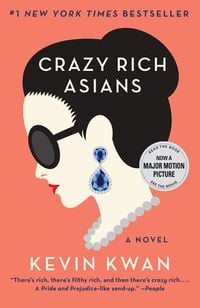
| |
| Author | Kevin Kwan |
| Release date | 2014 |
| Genre | fiction |
| Pages | 544 |
| Available From | |
Welcome, readers, to a new edition of Book Reviews! This month, I'll be reviewing a book that's picked up some steam lately, Crazy Rich Asians!
Crazy Rich Asians is the first of a trilogy of books. Last year, the first was made into a movie, and the second and third books are in production to also be turned into movies as well. The first movie featured an all-Asian cast (minus the roles that were non-Asian characters in the book,) and was well-received, earning a 91% fresh rating on Rotten Tomatoes. But we're not here to talk about the movie, we're here to talk about the book!
Crazy Rich Asians is a long book, but it's one of those paperbacks that have a lot more pages than you think it will upon first picking it up. It reads fast, though, which will keep you buying the next two books to see how things turn out. The main story tells of Rachel Chu, who goes to Singapore with her boyfriend Nick Young for his best friend's wedding. Nick's family is crazy rich, something he doesn't tell Rachel until it's far too late for her. Now Rachel must navigate the social and cultural norms of the new situation, all while Nick's mother Eleanor tries to break up their relationship.
The book features several different perspectives. Each chapter is told from the perspective of a different character, whether it's a minor switch like Rachel to Nick in a scene, or switching a scene to somewhere halfway around the world. Chapters are short, though, so you can pick up the book for ten minutes and read a couple and then put it down again. Not that you'll want to, though, there's usually a cliffhanger at the end of each chapter to keep you coming back for more. One thing you should be aware of, however, is the name-dropping of a lot of designers. Kwan usually sets up each scene by describing what the characters are wearing/doing/eating/etc. down to the labels on their designer clothes, and the outstanding costs. While I find it pretty fun and fascinating, I will say that this style isn't going to work for everyone, so if you prefer a plot-driven book and hate long descriptions of characters, you might want to look elsewhere.
Another thing I really appreciated about this book is that it's written by an actual Asian author, not some white person who did some research or maybe spent a year or two in Singapore. There are a lot of cultural notes in the book that I enjoyed reading, although a lot of them had me going "okay is this real or not?" due to how extravagant the characters' lifestyles are. There are descriptions of traditional food, holidays, and activities, and reading all of it is a lot of fun. If you want to learn how to do footnotes properly (looking at you, John Green), this is the book to read to learn how.
Crazy Rich Asians is crazy rich fun, a page-turner that will keep you reading for hours to see what happens next. If you like descriptive writing or learning about new cultures, this is definitely a book you should check out. If you're on the fence, you can try a sample: this book doesn't change; the first page will read like the last so you can read a couple of chapters to see if you like it or not. But I do implore you to check it out- you might find a new trilogy on your shelf.
That's all for me this month, readers, tune in next time for a brand new graphic novel review!
Rising Sun Reviews
Written by: Mariofan169 (talk)
| JoJo’s Bizarre Adventure | |
|---|---|
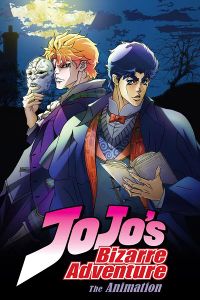
| |
| Studio | David Production |
| Release date | 2012 |
| Genre | Action |
| Episodes | 165 (and counting) |
Ah, JoJo’s Bizarre Adventure. The show where, according to its fans, the only people who don’t like it haven’t seen it all. Written by probable-immortal-vampire Hirohiko Araki since its humble beginnings from 1987, it’s easy to underestimate how influential this manga is. It is absolutely huge in Japan, as you can tell by its multimedia franchise made up of anime, novels, video games, live action movies, and even theme park attractions. It’s basically what Star Wars or Lord of the Rings is to the United States. Not only did JoJo inspire many other manga artists over the years, but it’s hard to come across a comedy or slice of life anime that doesn’t sneak in a reference to the series somewhere, to the point where it’s a fandom in-joke to call out “Oh BOY is that a freaking JoJo reference?” Speaking of which, while JoJo’s influence in the West isn’t as far-reaching due to Araki waging war with copyright lawyers everywhere by naming many of his characters with music references (“Esidisi/ACDC and Robert E.O. Speedwagon are some of the more infringing examples), most people know it for its seemingly infinite downpour of memes and the abundant flamboyant poses. What can I say, the “Bizarre” in the title isn’t poorly-deserved.
JoJo is actually split into many parts, each one with their own distinct identity, characters, setting, and personality. Personally, I think this is a genius move that keeps the series from growing stale. While other long-running action anime can eventually wear out its welcome when they rely on the same plot elements for the entire run, it’s very hard to feel this with JoJo as the beginning of a new part renews your interest while also occasionally bringing in characters from past parts to form a nice and satisfying continuity. It’s also because of these vastly different parts that make doing a traditional review of this series tricky, so what I’ll be doing is giving the basic plot of each part and then describe what new things they bring to the table or what I especially like or dislike about them. As of this writing, there are currently 8 parts in this series, but I’ll only be covering the ones that have been adapted to anime mostly for convenience’s sake, meaning just the first five parts. That pesky copyright war I mentioned earlier is the reason why the manga hasn’t been released in the West until just a few years ago, but even then it’s only up to Part 3, so if you want to experience Parts 6-8 you’ll have to get your hands dirty with manga streaming sites that may or may not be cesspools for intrusive ads and malware. Plus I haven’t gotten to Parts 7 or 8 yet, but let’s keep that between you and me, alright?
Part 1: Phantom Blood
In the late 19th century in London (and no, this isn’t related to the last anime I reviewed), Dario Brando saves a wealthy nobleman named George Joestar from a nasty wagon accident, along with a mysterious stone mask that happens to be the stepping stone for the entire series. As a show of gratitude, George offers to let Dario’s son, Dio, live in his mansion after Dario is left dying and bedridden. On the surface, Dio is a nice young lad who gets along well with George’s son, Jonathan Joestar (hence “JoJo”), but in reality, he’s a conniving sociopath who takes pleasure in beating up Jonathan and his dog, stealing a kiss from his crush in the most memetic way possible, and overall making his life hell on earth. Turns out having his mother die when he was young and living under an abusive and alcoholic father does a lot to a kid. Eventually, Dio discovers that the stone mask mentioned earlier has the power to turn its wearer into an immortal vampire and harboring a deep hatred for humanity, and everything goes downhill from there…
Ah, yes, the very awkward beginnings of the franchise. Part 1 might as well be the prologue of JoJo, rather than the first chapter, based on how different it is from the Parts that follow. For starters, the art style hadn’t really come into its own at this point and doesn’t have that distinctiveness that sets it apart from other series in the medium. Araki has cited another famous shounen series called Fist of the North Star as one of his biggest influences in the creation of the series, and that inspiration is most apparent here, between the bodybuilder-level muscular builds of the characters and the fact that Jonathan is basically FOTNS’s main protagonist, Kenshiro, but with a more gentle face. The way the characters are drawn is very reminiscent of other gritty series of its time, which isn’t that bad admittedly, but for me, it’s just a matter of personal preference, as I find it very hard to digest Araki’s early art style. This applies for the manga more at least, the anime adaptation is much more polished and easy on the eyes.
But overall, I’m not sure if I’m a fan of this Part. This might be a hot take among JoJo fans, but Johnathan Joestar’s as bland as they come, basically a knight in shining armor with not much depth. It’s fine if people like him for his honorable traits, but to me, he’s certainly eclipsed by the JoJos yet to come. And honestly, this just doesn’t have enough of that “Bizarre” quality. It’s a very normal plot for the majority of it, and the only surreal thing I can remember is some vampire bloke erupting out of a horse, Alien-chestburster style. It’s not hard to debate that Phantom Blood has a pretty slow pace, with one episode even having completely pointless several-minute-long flashbacks for two minor enemies that are killed off by the end of the next episode anyway, it’s just a big mess. While the tree that would grow from this would be something to behold, the seed itself is nothing to make a fuss about.
Part 2: Battle Tendency
We jump forward to 1930s New York, where Jonathan’s grandson Joseph Joestar is living a life of leisure predicting what people are going to say next with 100% accuracy until he comes under attack from one of Jonathan’s friends, Straizo, who has succumbed to vampirism. After dealing with him, he travels to Mexico where he learns that Straizo wasn’t the last vampire he would be dealing with. He’s told by Nazi general Rudolf von Stroheim that a trio of Aztec warriors called the Pillar Men, who also happen to be the creators of the Stone Mask that gave Dio his powers, would soon awaken from their stone prisons to wreak havoc upon the world. To prepare for the oncoming threat, he’s sent to Italy to master the art of Hamon energy under a master named Lisa Lisa, but he would also be joined by Caesar Zeppeli, an Italian Hamon user whose grandfather taught Hamon to Jonathan. Unluckily for them, Lisa Lisa possesses the Red Stone of Aja, an artifact that could make the Pillar Men immune to sunlight, their only weakness….
This is where that distinct JoJo formula starts to rear its head. I don’t just mean that because it’s the first part with those oh-so-fabulous poses, but it’s here where the battle scenes show that they were a cut above the rest for its time. When two characters fight in JoJo, it’s not so much a battle of strength, but of a battle of sheer wits. The fighters go through an entire hectic arms race trying to outsmart the other opponent, coming up with impossible strategies to see how much they can bend the rules of each other’s powers. Just when the villain is gloating about his victory while the protag is on the verge of death, it’s typical for the latter to say “Actually, almost dying was all part of my plan!” and completely turn the tables. This constant shifting and strategizing makes each fight feel incredibly unique and helps in making the series never grow old.
It also helps that this Part carries without a doubt my favorite JoJo. The rude and irreverent Joseph Joestar is a far cry from his honorable grandfather. His style of humor shines throughout the Part, like the aforementioned line predicting, where he says “Your next line is: [so and so]” and the opponent says exactly that every time without fail. One must also not forget that he’s the god of unconventional attacks; he makes running away from the fight a strategic move multiple times, and in one battle he assaults a vampire with a Tommy gun and half a dozen grenades out of thin air. Joseph Joestar is a treat from beginning to end, and the same could be said for Part 2 as a whole. Finally, JJBA is starting to look like JJBA.
Part 3: Stardust Crusaders
Dio Brando, now assuming the short and simple name of just “DIO”, has returned from his century-long slumber after being assumed dead. Joseph, now a 60-year old man and much more serious, travels to Japan to warn his grandson, a juvenile delinquent named Jotaro Kujo, in prison. It’s here where Jotaro reveals he’s the user of a Stand named Star Platinum, a being with extraordinary strength and dizzying punching speed. Basically, a Stand is a manifestation of an exceptionally strong-willed person’s fighting spirit which can come in many shapes, sizes, abilities, and rock song/band names. After DIO curses Jotaro’s mother with a life-threatening illness, Jotaro and Joseph gather several other Stand users who have beef with the vampire, including among others a Frenchman named Polnareff, who might be more of a main character than Jotaro himself, and Kakyoin, a Japanese high school student who potentially has a thing for Jotaro’s mother. Together, they all race against the clock towards DIO’s headquarters in Egypt, encountering many hostile Stand users along the way, to finish what Jonathan started.
Yes, this part is the introduction of Stands, the one aspect of the story that probably comes to mind first when one thinks about JJBA. Although the Hamon system, unfortunately, fizzled out over time, as there was a startling lack of vampires it would work on, Stands would move on to become the fighting style JJBA uses to this day. Under this system, the “bizarre” part of the title could truly become center-place, as the sheer variety of Stands and what they could do allow for an infinite amount of crazy and imaginative battles. Not to mention that literally, anything could have a stand. A baby? Sure! A dog? Why not? An orangutan that dresses up a sailor? All of these actually happen and demonstrate that the Stand Store had a massive blowout sale. l Of course, like how Part 1 wasn’t exactly indicative of the series to come, Araki largely used Part 3 as an experiment for these new Stands, and it sure shows. Take their abilities, for example. When you compare the abilities of Part 3 Stands (one Stand controls fire, another can stop time) to Stands later in the series (there’s one that can make people only remember three things at a time and another one summons snails that cause people who touch said snails to perceive themselves as snails...I swear I’m not making any of this up), you can imagine how the Stand system started off relatively straightforward.
Speaking of straightforward, how about that main protagonist, Jotaro Kujo? You can pretty much sum up his personality with one word: stoic. Rarely does he deviate from feeling annoyed or apathetic to everything around him. While it’s actually explained in the story (he thinks an opponent can read his motives like a book, so he counters this by showing no emotion at all), this makes him come off as less interesting a protagonist than Joseph or even Jonathan. Araki must have realized this too, because one of Jotaro’s companions, Polnareff, arguably gets more attention than the main character of the story! While Jotaro didn’t want to come along on the journey until his mother got cursed, Polnareff has a much more defined reason for hunting down DIO, in that one of his servants, killed his sister, and it’s an arc that’s focused on many times throughout the story, while Jotaro... doesn’t get much development, really. When you also consider the startling amount of episodes Polnareff gets to himself compared to the other side characters, you might as well call Part 3 Polnareff’s Bizarre Adventure.
Other than that….I used to look back fondly on Stardust Crusaders, but I’m not so sure anymore. Because of the journey aspect and the fact that our heroes are on a strict deadline, there’s very little downtime after a fight before it gets straight into another fight, leading to very little characterization. You’d think that this would lead to a very quick pace, but somehow it’s not the case. While the next two Parts after this are a brisk 39 episodes, Part 3 clocks at a total of 48 episodes. While this might seem forgivable at first, if you take a look at the manga, this Part is actually the shortest of the three (P3 is 152 chapters, P4 is 174, and P5 is 155). This ends up making the pace feel quite sluggish at times, not helped by the fact that Part 3 contains some of the worst Stand encounters in the series. As a result, Part 3 is probably one of my least favorite Parts in the series. The main things saving it are that it has some truly memorable Stand encounters, namely D’Arby the Gambler and Vanilla Ice, the finale with DIO has many of the most iconic moments in the series (for better or for...worse), and despite its ups and downs, Part 3 still managed to have a consistent enjoyment factor. Plus, both of the opening themes, “Stand Proud” and “End of the World”, are absolute bangers. In fact, that’s something consistent with all JoJo parts: every single OP knocks it out of the park, and I absolutely recommend listening to them.
Part 4: Diamond is Unbreakable
It’s 1999 in the small and quiet town of Morioh, Japan, and Jotaro comes in to learn more about a Stand user named Josuke Higashikata, the product of an affair between an elderly Joseph Joestar and a 20-something-year old woman (technically, this makes Josuke the uncle of the older Jotaro...it’s a messed up family tree). Although he tends to fly into an unyielding rage whenever someone makes fun of his ridiculous, fabulous pompadour hair, Josuke is actually a really nice guy, going through the thrills of high school and wanting nothing to do with this Stand business. However, he’s forced to draw his hand when it’s revealed there’s somewhere in town a Stand Arrow, a mystical object that awakened DIO’s Stand back in Part 3, leaving him to deal with a new band of Stand users. Things get worse when a threatening serial killer with a bizarre obsession with hands comes into play…
After the continent-spanning journey that was Part 3, it was probably the best choice to go on a smaller-scale setting for Part 4. While the characters check out many locales in Morioh, the story never leaves the quaint little port town, giving us time to grow familiar with the surroundings. This more peaceful aspect is also reflected on the characters: not just the main protagonist Josuke, who like mentioned before is rather pacifistic and is only drawn into conflict after his grandfather was killed, but even the “villains”. Besides a few exceptions, unlike Part 3, where all the Stand users were pretty much sadistic hitmen, all of the Stand users encountered in Part 4 either use their powers for a sympathetic goal or, while using their powers for greedier purposes like money or love, are ultimately kind at heart and are eventually befriended. Fans of Steven Universe will know what I’m talking about when I say that nearly every enemy later joins the supporting cast as a good guy, which is a fantastic way of making them more than generic Stand Users of the Week. I even like some of these former villains more than the main cast itself, like Rohan Kishibe, the eccentric manga artist who is just a gift from God. Trust me on that one.
Josuke himself is one of my top JoJos in the series, miles better from Jotaro of Part 3. Basically, if you liked Joseph from Part 2, you’ll love Josuke here: a wicked sense of humor, doesn’t take himself so seriously, but still has that Joestar cleverness that lets him outwit the opponent at every turn. In fact, I’m rather fond of everyone in this main cast. Josuke’s best friend, Koichi, starts off rather timid and shy, but throughout the series, he slowly becomes a badass in a pretty decent character development arc. Josuke’s other friend, Okuyasu, is also a highlight, as although he possesses one of the strongest Stands in the series…..his lack of intelligence make sure he never knows how to properly use it, but he’s a lovable character anyway. Jotaro even has a big role in the story, and it cannot be understated how much better he is as a mentor figure than the main protagonist. He’s mellowed considerably from the previous Part, and he’s just very entertaining overall. Lastly, I’m practically dying to gush about the main villain, who’s my favorite villain in the entire series, but alas, he’s technically a spoiler. But the wait will very much be worth it.
I gotta say, this is overall my favorite Part in the series. The characterization is much stronger thanks to the more low-key tone, the villain is a blast (ahem), and the humor is some of the best JoJo has to offer. There’s one thing I have to harp on the aesthetical side, though. Don’t get me wrong, I love the general look of Part 4, what with its colorful backgrounds and streamlined character designs, but when the animation has a hiccup, it reaaaaally shows. The lower budget for this part makes sense, considering this isn’t as grandiose as Part 3, but sometimes it’s just too painfully obvious. But that’s only a small thing that doesn’t mean a lot in my high opinion of Part 4.
Part 5: Golden Wind (or the cooler sounding Vento Aureo)
The latest Part to be adapted to anime centers around Giorno Giovanna, one of the many offsprings of DIO after his return (it seems the series can’t find a way to shake off the guy, given how he’s involved in every part…), 2 years after Part 4. Giorno has a dream, which he knows is just: he wants to rise to the top of Passione, one of Italy’s biggest crime syndicates, to make it turn a new leaf and stop its drug-selling ways, which children get involved with much too often. To help his cause, he joins a team led by Bruno Bucciarati, an eccentric (which is pretty much JoJo’s way of saying “normal”) person who’s able to tell if someone’s lying by licking their sweat. The members of the team aren’t much less stranger, including Guido Mista, a gunman who has a paralyzing phobia of the number 4, Narancia Ghirga, who’s unable to do even the most basic of math, and Leone Abbacchio, who has an almost comically irrational hatred for Giorno just for being a newbie. As the team fights many other members both loyal and traitorous to Passione, they’re eventually assigned to protect Trish, the daughter of the shadowy boss himself, but for all the wrong reasons…
While Part 5 follows basically the same formula as Part 3 (team of heroes travel from location to location, getting constantly hounded by baddies), I find this to be an improvement in just about every way. What I believe sets Vento Aureo apart from its predecessor is the character writing. In Part 3, I was only a fan of about half of the main characters and didn’t really care about the rest considering how shallow they were. That’s not the case in Part 5, where everyone in Giorno’s team has their own backstory detailing their tragic and heavily sympathetic pasts that really helps in making you invested in their arcs. They also have a lovely team dynamic, where the members have clear relationships between themselves and make it obvious that they consider each other dear comrades, in comparison to Part 3, where the character relations aren’t that fleshed out. Surprisingly, even the villains are easy to care about. In Part 3, DIO’s cronies never get to talk to each other and throw up their hands when their Stand ability is revealed. This is nowhere near the case in Part 5, where the villain team for the first half, La Squadra, are deeply loyal to each other and are fighting right up to their dying breath, making for some of the tensest fights in JoJo history. I wish I could laud the main villain (who is also deep spoiler territory) with similar praise, but for me he’s the low point of JoJo’s rogues gallery. His identity is kept a secret for so long that by the time he’s actually revealed, he has almost no character of his own. But if you’re willing to overlook this, you’re in for a treat with this part.
But really, what better way to sum up the series than that? I understand the sentiment among newcomers that JJBA is hard to approach because of all the weirdness and poses and...well, bizarre stuff. But once you get past all of that, you’ll find a truly special anime that’s quite unlike anything else in the anime industry. Is it perfect? Of course not, it still has a ton of issues that really makes the show drag on sometimes, but what show doesn’t? What’s more important is all the things it gets right: the wacky characters, the inventive fights, the beautiful art style, and so much more. JJBA is truly one of my favorite anime of all time, and it’s something you wouldn’t want to miss. Besides the usual DVD options, the best online source for your JoJo needs would be Crunchyroll, which is fully up to date on every episode. You can also find it (incomplete) on Netflix (only has Parts 1 & 2) and, for American users, Hulu (stops after Part 4). One thing I should mention is that I personally recommend the subtitled version over the English dub. Not just because the dub butchers several of the names to copyright-safe versions, but you’d be missing out on a lot of the charm the original Japanese track carries for all the wrong (or right?) reasons. I’ll be sure to see you next review and have a good one!
Hot Pot Reviews
Written by: Chibiki Daisy (talk)
| Dear Evan Hansen | |
|---|---|
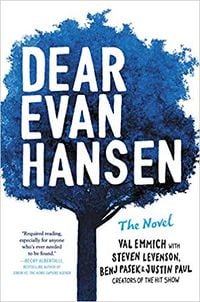
| |
| Author | Val Emmich, with Steven Levenson, Benj Pasek, and Justin Paul |
| Release date | October 9, 2018 |
| Pages | 368 |
| Publisher | Little, Brown Books for Young Readers |
Hello everyone, and welcome back to Hot Pot Reviews! My name’s Chibiki, and today’s review was supposed to tie into March’s edition of Rising Sun Reviews, but that won’t be happening today, for good reason. I recently learned that May is Mental Health Awareness Month, and in honor of that, we will instead be taking a look at something that has been praised for its use of and encouraging open dialogue about mental health and suicide: Dear Evan Hansen. The novel version, to be specific. There are a few reasons for that, but we’ll get to those later. For now, though, let’s dive into this book.
On December 4, 2016, Dear Evan Hansen made its Broadway premiere, opening at the Music Box Theatre. It quickly becomes a hit with fans of and those new to musical theatre alike due to its catchy music and resonating message, among other things. Fast forward to mid-2018, where the creators announce the novelization of this musical due to its popularity. For those who hadn’t yet seen the musical, this was a chance to experience it for themselves in a new way, while for those that had seen it, it would expand upon the story they already knew. It would also increase the amount of people able to discover the story of a boy wanting to belong.
If you’re not familiar with the story of Dear Evan Hansen, it’s about this kid with anxiety named Evan Hansen who has to write letters to himself as a therapy assignment. Sometime before the events of the book, he’s also broken his arm in a fall. However, on the first day of his senior year, he has a very interesting encounter with Connor Murphy. He both signs Evan’s cast and takes his most recent therapy letter from him in the span of about five minutes. A few days later, Evan finds out that Connor has committed suicide, and that his letter for therapy was found in Connor’s pocket, assumed to be Connor’s last words. Not wanting to disappoint Connor’s parents, he weaves a narrative of his ‘friendship’ with Connor, made all the more complicated by Evan having a crush on Connor’s sister, Zoe.
Just by knowing that much, people can already relate to this story. A lot of people are in therapy for one reason or another, likely for a reason related to mental health. Countless people have lost someone either in their lives or that they admired to suicide. By only knowing that tiny amount of the story, many people can already relate to it. As they’re reading, even more people are able to relate to this story. They relate to Zoe, who has to deal with her parents and their constant fighting after her brother’s death. They relate to Alana, who has a lot of things on her plate because she only wants to please everyone. They relate to Jared, who uses humor to cover up his real feelings. And of course, they relate to Evan, who has a busy mom and a dad that’s completely out of the picture, on top of everything else. So many people can relate to all these characters because they’re dealing with the same things. It’s a really nice thing to have in this day and age, especially with this book taking place in the modern day.
For those that have seen the musical or listened to the soundtrack before reading the book, one of the nice things is being able to see how the songs would play out if they weren’t in a musical. It’s a very refreshing thing to see since some people are just used to those events set to music while happening. Seeing extra little details within the space that the song is supposed to be in that aren’t in the musical is also a nice touch - it’s really something you can only get in writing as opposed to live on stage. Something else that’s nice about the book is that things that didn’t make it into the musical had a chance to be in the book. Anyone that knows about the cut scenes or songs will be pleasantly surprised to see them in the book, especially if they didn’t expect them to be there in the first place.
Of course, with this book being adapted from a musical, there’s bound to be some differences between them besides cut scenes. The most welcome of them, in my opinion, is that we actually get to see a few things from Connor’s point of view in the book. In the musical, we only really saw him in the first few scenes, and a version of him that’s just a figment of Evan’s imagination later on. In the book, we still get him in the first few chapters. However, after his death is mentioned, we get a few chapters here and there of events from Connor’s point of view. He’s there in spirit for Evan’s speech for The Connor Project around the halfway point, with his chapter of the event running almost concurrent with the chapter of the same event from Evan’s perspective. He may be considered gone, but these little chapters show that he does live on.
There are exactly two other things I want to talk about with this book. First, the quote on the inside of the back cover: “The me I am is not the me I was.” It’s almost representing of Evan’s growth throughout the book. He starts off as a socially anxious nobody, becomes a recognizable face with some confidence not long after the formation of The Connor Project, and is back to socially anxious by the end of the book as he realizes the consequences of his actions in forging his friendship with Connor. It’s extremely fitting for this story, as well as for anyone else who’s gone through some pretty drastic changes due to their actions.
The second thing is right between the end of the epilogue and the acknowledgments: an author’s note. In line with the themes of this book, they’ve generously provided a short list of related resources for anyone needing them. They also recognize that some of the problems faced in the book are real problems that other people are going through and that no one should be alone or feel like they have no one to talk to about them. I don’t think I’ve ever seen another book do something like that. Major kudos to the authors for that one!
Dear Evan Hansen isn’t your average, everyday high school story; it’s one that’s meant to impact lives in a positive way. The biggest way it does this is through its message: you are not alone, you will be found. In this context, ‘found’ is a bit of a finicky thing to try and explain. It’s something that you only really understand if you’ve experienced needing to be found before (which I have). But if I had to explain being found, I think it would be along the lines of someone picking you up from the ground and telling you that things are going to end up okay. They may not be currently, but they’ll end up that way in due time. That’s probably the best I can explain it without going in depth on a few other things. Regardless, for anyone else that’s ever needed to be found, this book is for you. It’s probably one of the most powerful stories I’ve come across in all my 17 years of life. It teaches people that even if you feel lost or that you don’t fit in, you’ll come across someone (or something) that will tell you otherwise. With all the tragedy going on in the world lately, that one thing - that one positive voice, or that one heartfelt message - is just what some people need most.
Thank you all so much for taking the time to read, and I wish nothing but good things to come your way for the coming months.
Spacing Out
Written by: Stargazing (talk)
Hi everybody! Welcome to Spacing Out, the only section where you won’t be told to “stop spacing out and get back to reading these articles”. For those of you who don’t know me, my name is Stargazing, and I’ll be your celestial guide through the journey of seeing things you’ve only seen planted firmly on the ground, looking up at the sky during late hours and wondering how everything works.
My goal for this section is to investigate space-related items and have the community gain insight on parts of the unknown. Let’s get started!
Hidden Vacuums
Black holes are… well. There’s a lot we know about them, but there’s also a lot that we aren’t sure of. What we do know that they’re a lot of matter squeezed into a tiny, tiny, area. This is the final stage of a certain stars life. I, fortunately for all of you, have not gotten to that stage of my cycle yet. When a star reaches the end of their life, they struggle to hold their weight and collapse in on themselves, thereby becoming one. Smaller black holes eventually cease to be, but bigger ones can last for quite a long time. Some scientists believe in another class of black holes, called primordial. These black holes were created when the universe was formed. However, we currently can’t confirm or deny the theory, because we are unable to directly observe their creation.

What I find super interesting is that black holes don’t really have a size, they just have a mass. I’m entirely guessing here, but the mass probably dictates the size we perceive them as. Black holes are incredibly dense, absolute units, and capable of sucking mass… Well, not exactly. While they can certainly get to things that are really close to them, at a distance, they truly don’t have any more gravity than a normal object.
What this means is if you stay out of its Schwartzchild Radius, you can survive a trip near one. What this also means is that if our sun were a black hole, we’d hardly feel the effects because it will have the same amount of gravity. Granted, we’d lose our natural light and heat source, but we wouldn’t die and we wouldn’t be thrown out into space!
They’re like a vacuum cleaner, easily able to suck up what’s in front of it, but can’t reach the dirt all the way on the other side of the room.[2] Except, unlike vacuum cleaners, they can increase in size after sucking up an object. While we do have a formula for how fast they can grow, which is proportional to their current mass, we have found a black hole that seems to contradict that slightly.
Using the formula, we can go back about 1.2 billion years, and find it started out as the size of 5 thousand suns, while most black holes start at a size of around 50 suns. The speed at which its growing means it can eat a mass at the size of the sun every 2 days. This black hole means either the formula we’re using to determine black hole mass is no longer accurate, or, the more interesting conclusion, there’s a way to “make 5 thousand solar mass black holes very close in time to the Big Bang”.[3]
Using this black hole to gain more insight into the Big Bang is a very cool idea, and it’s something I really want to follow if they decide to go through with it. Being able to discover our origins through an object in the sky is very thrilling because truthfully, we don’t know much at all about the Big Bang. This kind of closure fills me with curiosity and excitement.
Recent Developments and Developing Photos

On April 10th, 2019, the Event-Horizon Telescope Collaboration (EHT) managed to upload this photo of a supermassive black hole, called Messier 87. It’s beautiful, isn’t it? While we can never get a photo of a black hole directly, we can get an image of the rings of light around them, and use the outline of the hole to determine where it is. However, taking a picture of that isn’t like taking a picture of the tea you’ve had this morning. This object is 6.5 billion times more massive than the Sun! It took a team of around 200 researchers and a decade of time to figure this out.
In order to take the image, scientists used 8 radio telescopes, which in turn created a virtual telescope around the size of the Earth. They used atomic clocks on each of the telescopes so each one would receive the same wavefront of light, and they were pointed in an elaborate sequence.
The telescope array processed 5 hundred thousand gigabytes of data over two weeks and processed their received data on supercomputers so scientists were able to view the images. These images were processed and uploaded to the general public on April 10th, 2019.[1] Technology has genuinely come a long way, and I’m super impressed. Supermassive black holes are relatively small, so it’s taken us a long time to get an image. I think we’re lucky that we’re in a zone of space where we can take images of things like this, yet not have it affect us.
Conclusion
Black holes, while still being relatively unknown, have filled the world with wonder. There’s a lot we can discover over the years to come, and I can’t wait for the day where we’re able to discover more.
Thank you for spacing out with me, and until next time!
| The 'Shroom: Issue 146 | |
|---|---|
| Staff sections | Staff Notes • The 'Shroom Spotlight |
| Features | Fake News • Fun Stuff • Palette Swap • Pipe Plaza • Critic Corner • Strategy Wing |

